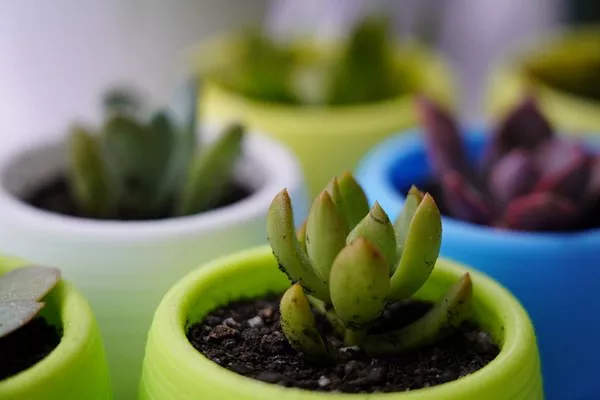Succulents are renowned for their beauty, resilience, and low-maintenance nature. However, they are not immune to pests. One common pest that can affect succulents is scale insects. These small, oval-shaped pests can infest various parts of the plant, causing damage and hindering their growth. Recognizing the signs and symptoms of scale infestation is crucial for early detection and effective treatment.
In this comprehensive article, we will explore what scale looks like on succulents. We will discuss the appearance of scale insects, their life cycle, the damage they cause, and methods for eradicating them from your succulent collection. By learning to identify scale infestation, you can take prompt action to protect your succulents and maintain their health and beauty.
I. Understanding Scale Insects
Appearance of Scale Insects:
Scale insects have a distinct, shield-like or dome-shaped appearance.
They come in various colors such as brown, black, white, or tan, depending on the species.
Scales are typically small, ranging from 1-5 mm in size, but can be difficult to spot due to their camouflage and immobility.
Life Cycle of Scale Insects:
Scale insects undergo incomplete metamorphosis, consisting of three stages: egg, nymph, and adult.
Eggs are laid by adult females in a protective covering called the “scale.”
Nymphs emerge from eggs and go through several stages before reaching maturity.
Adult male scales are often smaller and winged, while adult females are larger and wingless.
Common Scale Species Affecting Succulents:
Mealybugs: Soft-bodied scales with a cottony or waxy appearance.
Armored Scales: Hard scales with a protective shell-like covering.
Soft Scales: Scales with a soft, pliable body and no hard outer shell.
II. Signs and Symptoms of Scale Infestation
Visible Presence of Scales:
Look for small, round or oval-shaped bumps on the leaves, stems, or other parts of the succulent plant.
Scales may appear as raised bumps, crusty patches, or small shells attached to the plant surface.
Pay attention to the undersides of leaves, leaf axils, and along stem crevices where scales often congregate.
Sticky Residue (Honeydew):
Scales excrete a sugary substance called honeydew, which can accumulate on the plant’s surface.
Honeydew attracts ants and can lead to the growth of black sooty mold on the plant.
Distorted Growth and Yellowing Leaves:
Scale feeding damages plant tissues, resulting in distorted growth patterns and misshapen leaves.
Affected leaves may turn yellow, wilt, or drop prematurely.
Leaf Curling and Stunted Growth:
Severe scale infestations can cause significant stress to succulents, leading to stunted growth and overall decline.
Leaves may curl inward or fail to develop fully.
Presence of Crawlers or Eggs:
As scale insects reproduce, they release crawlers, which are tiny, mobile nymphs.
Crawlers may appear as minute specks moving along the plant’s surface.
Eggs can sometimes be observed within the protective scale covering.
III. Treatment and Prevention Strategies
Isolation and Quarantine:
Immediately separate any infested succulents from healthy plants to prevent the spread of scales.
Isolate infested plants in a separate area until they are treated and deemed pest-free.
Manual Removal:
For small-scale infestations, manually remove individual scales using a cotton swab or soft brush dipped in rubbing alcohol or soapy water.
Gently scrub the affected areas to dislodge and kill the scales.
Regularly monitor the plant for any new infestations.
Natural Predators and Biological Controls:
Introduce natural predators such as ladybugs, lacewings, or predatory mites to control scale populations.
Encourage biodiversity in your garden to attract beneficial insects that feed on scales.
Consider using biological controls like parasitic wasps, which specifically target scale insects.
conclusion
If you suspect your succulent has a scale infestation, it’s important to take action promptly. You can try removing individual scales using a cotton swab dipped in rubbing alcohol or horticultural oil. For severe infestations, you may need to use insecticidal soap or consult with a professional gardener for appropriate treatment options.
Remember to isolate affected plants from healthy ones to prevent the spread of scales, and monitor your succulents regularly for any signs of re-infestation.


